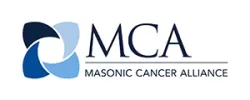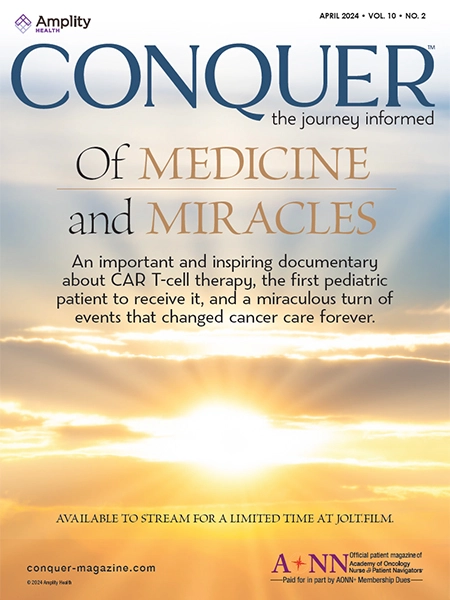Name: Brenda
Position: Nurse Navigator
Subject: High-risk benign breast disease management
Question:
We recently had our National Accreditation Program for Breast Centers (NAPBC) re-accreditation site survey. We were cited for having no formal follow-up on our biopsies that return atypia, ADH, ALH, etc. We refer those patients for surgical excision, but beyond that, we may not see them until their 6-month post-biopsy follow-up imaging. All of our surgeons are independent and not hospital-employed; therefore, these excisions often are done at other facilities. What is the accepted protocol for ensuring that these patients are seen by someone who can talk to them about high-risk follow-up―possible tamoxifen or an aromatase inhibitor as a preventive measure?
Answer:
Upon receiving the diagnosis from their biopsy results, they should be offered an appointment with a high-risk specialist or a genetics counselor. The patient can, of course, decline the referral, but the referral should be made and documented that it was recommended.
Name: Joe
Position: Nurse Navigator
Subject: New navigator
Question:
Hi Lillie! We’re starting a nurse navigator program for thoracic surgery (lung and esophageal cancers), and I was wondering where to begin. A needs assessment? Your input would really help. Thank you for your time and for fielding questions!
Answer:
Start with knowing how many lung cancer patients and how many esophageal cancer patients you are currently seeing and treating. Look at demographics such as their insurance carrier, age, disease stage, and home zip code, which will help you determine what portion of these patients are local, underserved, etc. Next, from tumor registry data determine if they are receiving treatment in accordance with NCCN treatment guidelines. For example, let’s say that 28% aren’t getting radiation. You will want to focus specifically on understanding why, and the oncology navigator possibly will need to intervene to ensure they get their referral, keep the appointment, and have all of their radiation treatments as prescribed. Lack of transportation is commonly a cause of not undergoing radiation, for example, and that is a barrier you can solve for the patient. Continue with the rest of your needs assessment to determine what other barriers are common and how they might be addressed. These are patient populations with a high mortality rate, so even consider data on religion, if it is captured in your hospital database.
While working with these patients, begin reviewing what steps, if any, have been taken to bring in patients/consumers for lung nodule screening. People need to be invited in to have this done, spoken to in a friendly way, and told how proud we are that they decided to do this for themselves and their families. People don’t get this done because of comments made by schedulers that are degrading (“Oh, so you finally want to know if you have lung cancer or will get lung cancer, right?”).
Extend your community outreach beyond adults, too, by going to high schools and (sadly) middle schools, and including vaping as a key risk factor. We need to get young people away from these temptations.
Good luck! And remember, we offer a certification program specifically for thoracic nurse navigators, too!Name: Jill
Position: Nurse Navigator
Subject: What are the “right” things to say when a biopsy is positive?
Question:
I cringe and take a deep breath before calling patients with positive results. But when I do call patients, I keep a neutral professional tone so that I do not inadvertently leave them with the impression that it is a death sentence or, on the other hand, not serious and sound overly cheerful or optimistic. Being a navigator is different from finding out your friend has cancer. Questions: (1) Is it appropriate to say “I’m sorry” about your diagnosis, etc? (2) Can you suggest some leading sentences on how to express compassion but still maintain objectivity? (3) What are the right things to say when a patient is in shock or crying and cannot focus on what you are saying? (4) What are the right things to say when they shut down and do not want to discuss the next steps except the referral?
Answer:
Begin by finding out how much they already know. “Tell me about your situation. I know that you had a biopsy recently. What prompted a biopsy to be done? What did the doctor tell you during or right after the biopsy what he thought the pathology results might be?” This gives you the information you need to decide how to tell them the results.
If the patient said, “I felt sure it was cancer by how hard the lump was and my radiologist also said he anticipated it being cancer. Is it?” then you are able to say, “Well you and your doctor were correct. It is cancer. Let me give you some information about it that provides you and your treatment team with more information about what treatments might be needed” (ie, grade, clinical stage, ER, PR, HER2, type, etc).
Here is another scenario when you ask the patient how much she believes she knows. The patient says, “I hope it isn’t cancer. The doctor didn’t answer me when I asked his opinion.” You then need to have a different opening. “Cancer is a scary word. We always hope it isn’t cancer. Did you think, in your own mind, that it might be cancer? The pathology results have confirmed that, yes, it is cancer, but let me provide you with some information about your cancer that may be helpful. (Begin by providing all of the good features—ER-positive, its small, its DCIS, etc.) Ask her if she knows anyone who has had her type of cancer, and ask how they did. Tell her whether you will be present at her doctor appointment and who to bring with her for the consultation. If she is early stage, tell her. If the patient has advanced disease, tell her that a multidisciplinary team is going to be taking care of her.
Timing of telling someone their diagnosis―it is important to know where the patient is when you are calling her. It is best to establish a call time in advance, knowing the patient will be unoccupied (not at work, not driving a school bus, and has family around) and can process what is being said. Encourage her to have a family member she trusts with her when getting these results, whether good or bad news. If you are able to provide the clinical stage, make sure you clearly differentiate the stage from the grade. Patients get them mixed up and instead of understanding they have stage I grade 3 cancer, they tell people they have stage III cancer. Discourage them from surfing the Internet and instead provide 2 credible websites for information. If you can e-mail the patient URLs, then that is even better.













